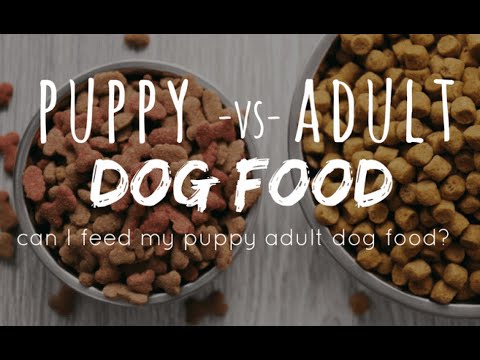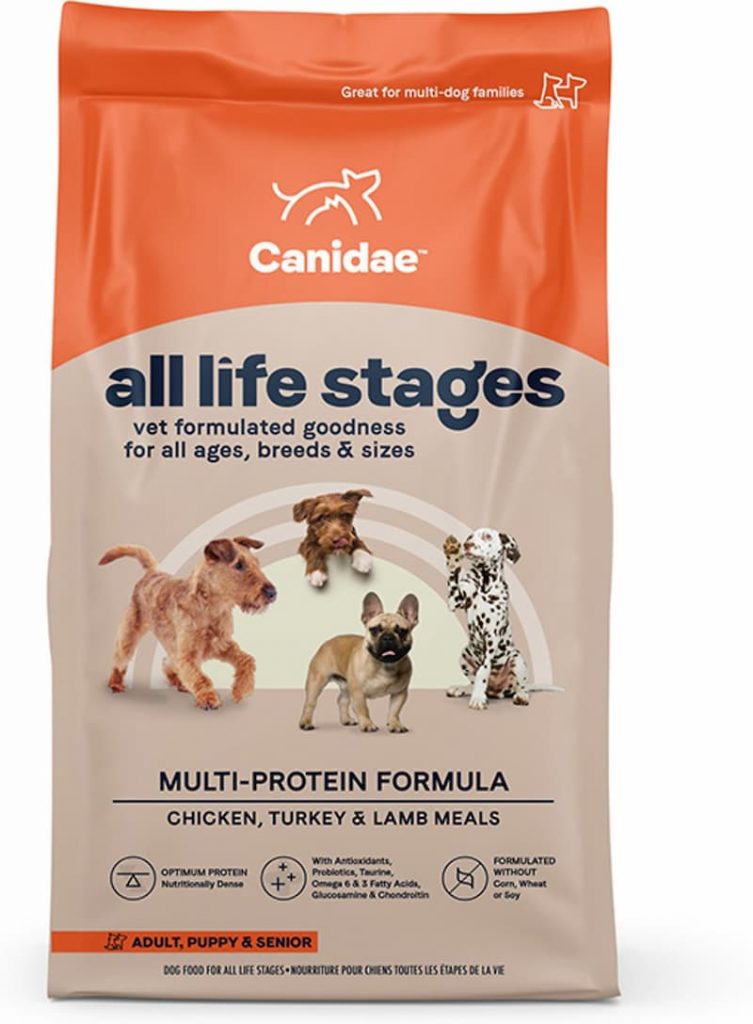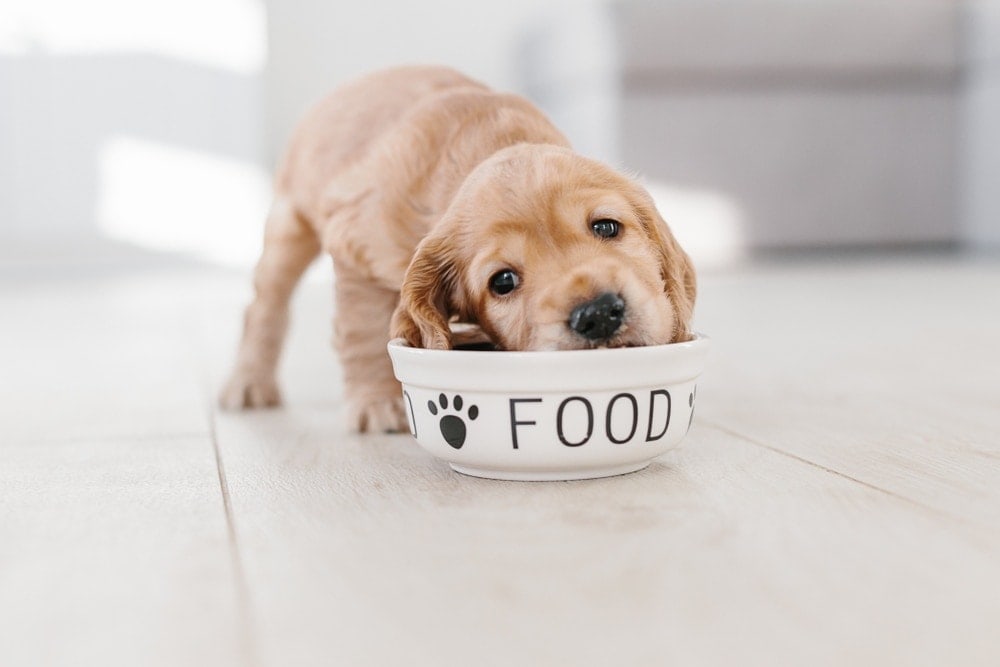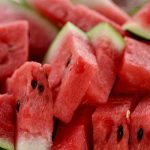New puppy owners may ask a lot of questions. One of the most common questions is, “Can I feed my puppy adult dog food?” Making sure your puppy has all the nutrients it needs is one of the most important things you can do to help him grow into a strong, healthy puppy. Puppies and adult dogs have different nutritional needs, so it is important to provide puppies with a complete and balanced diet suitable for their stage of life. So the answer is you should feed puppies puppy food and adult dogs adult food. They are all designed with different goals in mind.
Differences Between Puppies and Adult Dog
The whole reason why puppies and adults have different nutritional needs is that they have important biological differences. They work differently and therefore require different types of fuel.
For example, puppies have a higher body surface volume than adults due to their small size. This means they lose their body temperature faster than adult dogs. Puppies have to work harder than larger adults to maintain their body temperature (although this is also true for small breeds and large breeds). That’s why puppies and small breeds love hotbeds.
“Working harder” essentially means burning more calories in their internal furnaces to counteract the body heat they are constantly radiating into the environment. That means puppies need more calories per pound of body weight than non-pregnant, non-nursing adults.
In addition, puppies grow rapidly; Dogs do most of their growth in the first two or three years of life. This growth requires resources different from simple living. Specifically, this means that puppies need more amino acids — the building blocks of proteins and tissues — than adults do.
Differences Between Puppy Food And Adult Food

As you might expect, biological differences between puppies and adults show up in different nutritional needs.
The biggest major difference between the puppy diet (growth and breeding formula) and the adult diet (maintenance) is protein. Puppies get 22.5% of their calories from protein, compared with 18% for adults. Adults can certainly tolerate higher protein content in puppy food, but because protein is high in calories, it can lead to weight gain. However, if puppies are fed adult food and lack the protein they need, they often develop developmental problems.
Puppy food contains fatter than adult food. According to the guidelines, adult food only needs to get 5.5 percent of its calories from fat, while puppy food must get 8.5 percent from fat. This is mainly to ensure that the puppy’s food is “energy-intensive”.Fat has more calories per pound than protein or carbohydrates, ensuring the puppy’s meal is filled with energy to ignite an internal fire. In contrast, adult care formulations are designed to be leaner, so they contain less fat and therefore fewer calories per bite.
Puppy food also has different mineral content than adult dog food. For example, a puppy’s diet must be 1% calcium, while an adult’s diet requires only 0.6% calcium. Similarly, a puppy’s diet must contain 0.8% phosphorus, compared with 0.5% for most adult dogs.
Why Puppies Can’t Eat Adult Dog Food?
Nutritional Needs
It is unlikely to harm your puppy significantly if it eats adult food. Nevertheless, there are specific nutritional requirements for your puppy’s development that aren’t as common in adult food but are necessary for it to grow strong and healthy.
Extra calcium for bone health, glucosamine and chondroitin for joint health, and oils for skin health. In food designed for younger dogs, these factors are carefully considered. Because of this, most veterinarians advise feeding your infant puppy food until they have finished developing into adults.
Size Of Kibble
Adult kibble might simply be too big when you first start your puppy on dry food. The large size could harm baby teeth, which are delicate. It’s similar to giving a toddler a whole apple to munch on rather than breaking it up into manageable pieces. You may be interested in When Can Puppies Eat Dry Food?
When starting puppies on dry food, you might even discover that you need to moisten the kibble with warm water to make it easier to chew. Similar to human babies, puppies can experience teething.
Why Do Puppies And Adult Dogs Need Different Foods?
The answer is simple: scale and growth. As mentioned earlier, puppies are in the growth phase of life, a crucial early stage that plays an important role later in life. Therefore, they need nutritious foods to support this. This means higher levels of amino acids, minerals, and vitamins.
Another reason is body temperature. Puppies lose heat faster than adult dogs, which means exercise is key. It takes energy. It takes a lot of energy. Food should contain high calories and a certain amount of fat. This gives them fuel, helps raise their body temperature, and, of course, everything they need to play.
Do “all stages of life” Foods Safe for Puppies?

In addition to foods labeled as suitable for “growth and reproduction” or “adult maintenance,” you may also see foods labeled “All life stages.
These foods are suitable for most healthy dogs (they may not be good for some older dogs), so you can continue feeding your pup.
These foods are designed to meet the requirements of “growing and breeding” and “adult maintenance” but since the nutritional requirements of puppy foods exceed those of typical adult foods, this means these are basically puppy foods.
Because they are higher in protein and fat than many adult foods, you need to keep a close eye on the weight of adult dogs fed these diets.
But as long as your dog is pretty and slim, it can be suitable for adults. If you want to make a lean dog healthier, this extra protein could also make puppy food or “all life stages” food a great weight gain dog food.
Quick Guide To Feeding Your Puppy
To support your dog’s development into the lovely, healthy dog it should be, we both agree that puppy food is the best kind. Here is a quick guide to what your dog should be eating by when in case that’s even more helpful.
6-12 Weeks
When a puppy is between 6 and 8 weeks old and has been weaned, you can start giving it moistened dry puppy food. Puppies that are still growing require frequent feedings and bowel movements. At this young age, approximately 4 small feedings per day are required.
3-6 Months
You must continue to feed your dog puppy food once it reaches the age range of 3 to 6 months. Puppy food will occasionally even specify the age ranges for which it is best suited. It provides your puppy with the nutrients they most need at each stage of development. The number of feedings can be reduced to three per day. You may be interested in 3-Month-Old Puppy: Health, Food, Training
6-12 Months
You can begin to reduce the amount fed to 2 times per day after 6 months. You should eat according to your veterinarian’s recommendations for adequate portions. The majority of dogs are prepared to begin switching to adult food around the 9-month mark.
However, how your dog develops at each stage depends entirely on its breed. Some larger breeds take much longer to mature and can’t begin the adult food train until much later than small and medium dogs can. Each situation is unique.
Transitioning Your Puppy to Adult Dog Food
As puppies age, differences in their nutritional needs will change. She will need fewer food resources to promote growth, but she will need more resources to support maintenance. So when she’s done with these changes, you need to switch her to adult food.
When to Transition to Adult Food
Consult your veterinarian to help determine the best time to switch from puppy food to big girl food, but most dogs are prepared to switch between 18 and 24 months of age. The exact age at which your “puppy” becomes a “dog” varies from individual to individual, but most breeds mature at a relatively young age, while most large breeds take 2 years or more to fully mature.
Watch For Signs
Due to the abundance of interesting things to see, smell, and chew, growing puppies have much higher energy needs than adult dogs. – but once they’ve reached maturity, their metabolic rate slows down.
As their calorie-dense puppy food will have filled them up much quicker and topped off their energy stores, your dog will usually give you signs when they’re ready to transition to adult food.
As a result, they may skip meals or leave food that they would normally gobble up. When you notice that they are showing signs of being full for a longer period of time, keep an eye on their bowls and start to reduce the number of meals you give them.
However, if you notice that your dog’s appetite has diminished noticeably and that they are not drinking or eating much at all, please take them to the vet as soon as you can because this could be a sign of something much more serious.
Make Changes Gradually
Regardless of your pups’ age at the time of the food switch, this must be done gradually.
First, mix a bit of adult dog food with typical dog food for small dogs. About 10-20% of new foods are ideal. If your puppy tolerates it well, you can double the amount of new food the next day. Always try to minimize intestinal discomfort and don’t be afraid to slow the transition if necessary.
It usually takes about a week or so to make a full transition from 100% puppy food to 100% adult food.
How Much Food Do They Need?
Considering your dog’s size, breed, metabolic rate, and level of activity will help you determine how much adult food to feed them. They are typically much calmer than when they were younger because they no longer require as much fuel for growth and development.
You might need to cut back on the number of times you feed them throughout the day as they get older and have a lower metabolic rate.
Puppies should be fed more frequently and in smaller portions; they typically consume three to four small meals per day. However, once they start eating adult food, you should reduce this to two meals per day.
Because the calories can add up quickly and because, like us, being overweight can result in a variety of health issues for your dog, it’s crucial that you estimate their portion sizes while keeping any treats or snacks in mind.
To stay healthy and fit, make sure they consume a complete, balanced diet and engage in plenty of exercise.
Summary
When it comes to puppies, it’s best to feed them a diet designed specifically for puppies. It’s a good rule of thumb to follow throughout your dog’s life – feed them food that’s appropriate for that particular stage in their life. If you have an older dog, look for foods that keep bones and joints strong; For puppies, find food that helps bones, joints, and muscles grow. It’s all about your dogs and where they are.
First-time dog owners are easily overwhelmed by puppies, and the food you feed them is at the top of the pile. As long as you feed your puppy a high-calorie, high-protein diet rich in nutrients, minerals, and vitamins, you are sure to succeed. These will help promote growth and give your puppy the best start in life.
Read More:





